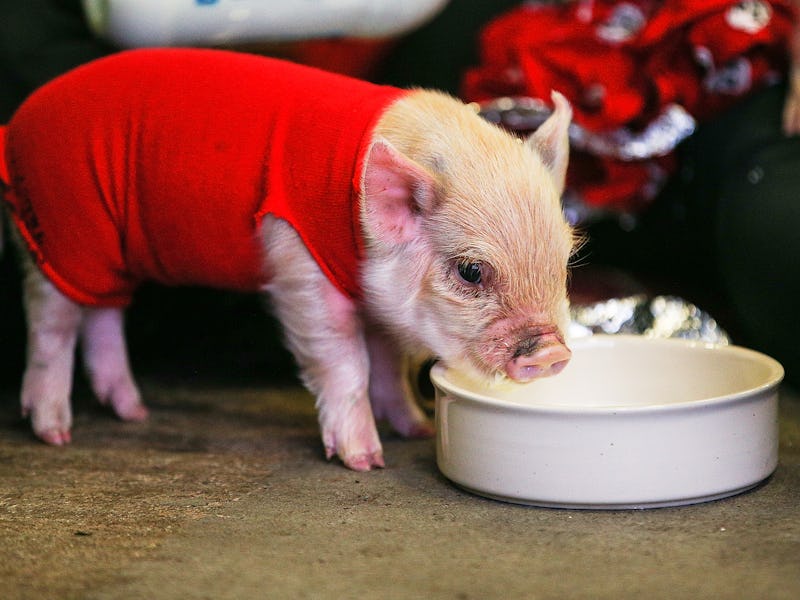Hydrogel Mucus-Mimic Aims to Replace Animals for Gastric Drug Testing
Fake intestines are good news for real animals.

Animal guts play a small, important role in drug development — but scientists want squishy gels to replace pig intestines. Certain hydrogels could help take animals out of that equation, according to a new study published in the journal Chemical Communications. A team of British chemists compared the polymer-retention properties of the gels with pig mucus membranes and cow corneas, and found that a glycomonomer-containing gel did a pretty decent porcine mucosa impression.
As University of Reading polymer expert and study author Vitaliy Khutoryanskiy told Chemistry World, finding an effective way to get drugs to adhere to our innards is an important step in pharmaceutical development, as such membranes are constantly awash in biological fluids. Plus, although animal testing remains a potent and necessary (but imperfect) aspect of basic science and drug testing, a guiding ethical imperative for the past 50 years of animal research have been the so-called 3Rs: that is, reduce, refine, reuse. The switch from animal to hydrogel would mark another small step in reduction, echoing the organ-on-a-chip movement that is trying to achieve critical momentum.
For the purposes of Vitaliy Khutoryanskiy and his colleagues, the best animal replacement appears to be a glass-bound hydrogel containing the sugar glucosamine. When washing the gel and pig guts with a “simulated gastric juice,” both materials retained mucoadhesive polymers at statistically the same efficacy. When the scientists looked at the topology of the gel under a scanning electron microscope, the scope revealed a flatter, more uniform surface than the irregular and porous pig mucus membrane. Under mechanical testing, the elasticity of the hydrogel was far greater than that of the pigs. Hydrogen bonding or other chemical interactions, the authors conclude, likely drive the similarity between the hydrogel and the pig membrane. (No synthetic substance was able to accurately mimic the adhesion of polymers to cow eyes.)
Given the limitations, such a material won’t fully replace guts sourced from an abattoir, but the study authors write it could “be used in the pre-screening of mucoadhesive dosage forms, thus reducing the number of lab animals used in mucoadhesion research.” For now, that’ll have to do, pig.